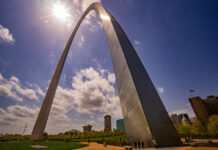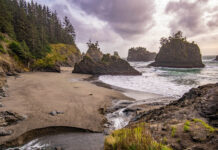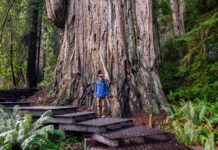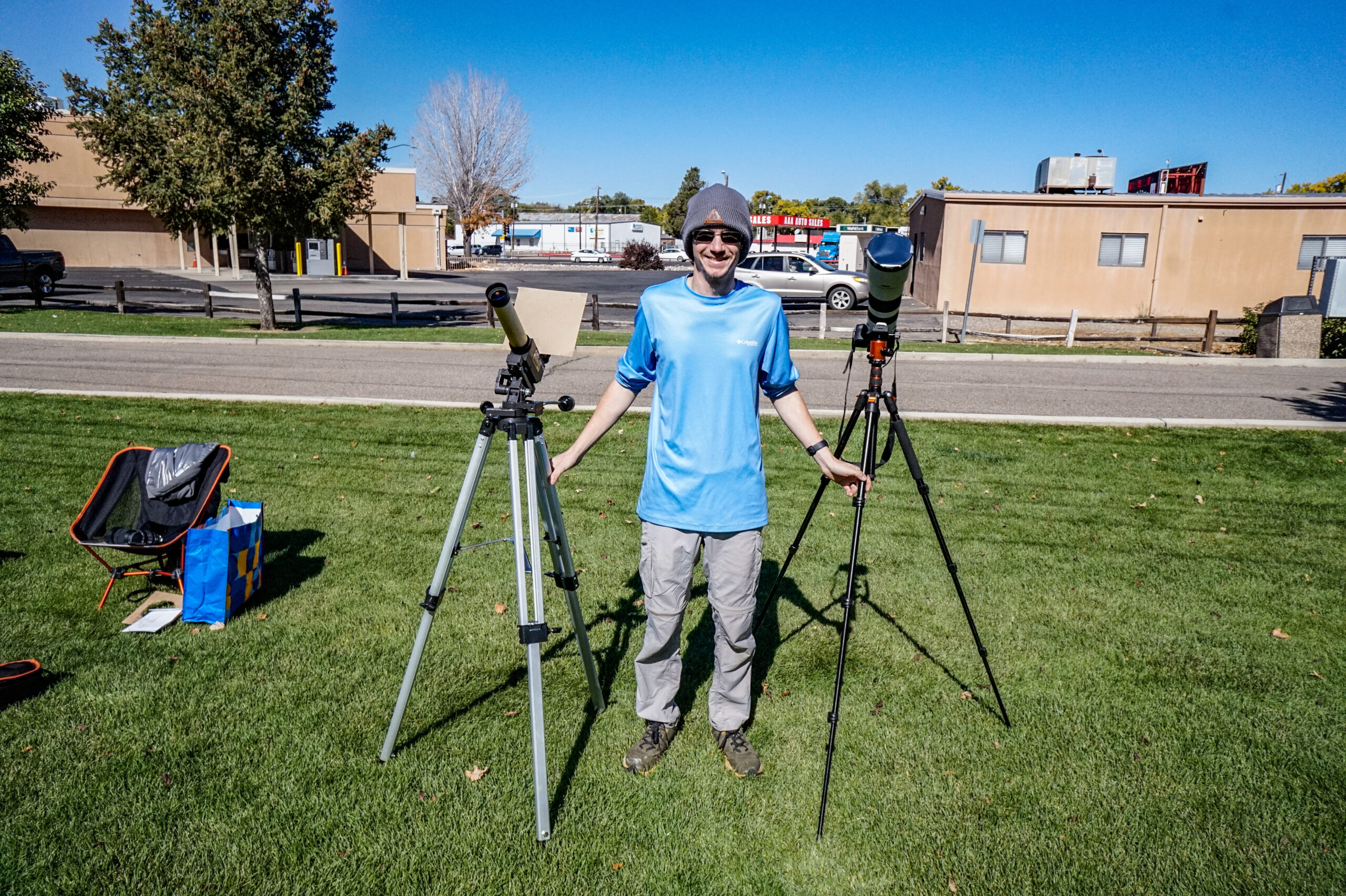
…to a burning ring of fire. That was the goal of the entire trip out west, to see the ring of fire solar eclipse that was set to traverse the southwestern U.S. on October 18.
Looking back now, I am still baffled I was able to make it out there. Just earlier in the year, it was a dream with no real legs, but sitting here a month later, it still seems a bit like a dream.
My father and I arrived in Farmington, New Mexico, after a 3-hour drive from Arches National Park. We got there around 10 p.m. to find out that our hotel had somehow managed to “lose” our reservation. With the eclipse happening the next morning, we were forced to find other occupancy options, which were non-existent with so many people in town for the eclipse. Thus, we wound up staying in what I can only describe as the sketchiest motel I hope ever to set foot in.
I won’t offer much travel advice in these columns but I will say this: do not, ever, stay at the “Farmington Inn.” The 2.7 star Google rating is FAR too high and a relic of days when this motel perhaps wasn’t in as bad shape.
After a night of barely sleeping, we quickly exited our train wreck of a room and made our way to the absolutely beautiful Berg Park nearby. Some grass fields along the beautiful Animas River made for a lovely place to watch the eclipse. There was some frost on this chilly morning but it was quickly warming up.
The eclipse
The eclipse began just a touch after 9 a.m. local time. As the moon began to take a small bite out of the sun, I snapped my first photo. You can also see several sunspots on the sun’s surface that would eventually be covered up by the encroaching moon.

Over the next hour and a half, the moon would gradually cover up the disc of the sun. Eventually, this would turn the sun into a neat crescent.
Looking at it with the naked eye, you would never have noticed anything happening if it weren’t for the eerie dimness setting in. Unlike the total eclipse of 2017, it wouldn’t get completely dark on us, but it did get significantly dimmer with a weird “twilight” effect all around.

One effect that was exaggerated in the dry desert air was how much the temperature would drop. The morning low of 33 had already heated well into the 40s by the time the eclipse began, but we would see temperatures fall around 10 degrees during the eclipse, making it feel much colder.
As the eclipse progressed, my dad and I began chatting with a few other guys there to see it. They had the brilliant idea to pose with shadows from a nearby tree hitting us for a neat photo op. Shadows may seem like a bizarre thing to care about during an eclipse but it is actually a neat effect. The leaves create a bunch of pinhole cameras that result in hundreds of tiny eclipses being projected on the ground, or in this case us.

Ring of Fire
Next up was the ring of fire itself. The annularity, or length of time the ring was visible, was a bit over 4 minutes but didn’t feel like anything anywhere near that long. I was trying to get photos and enjoy it as well as work the livestream on Now Habersham’s Facebook page, so it was quite a hectic few minutes, but the view was incredible.
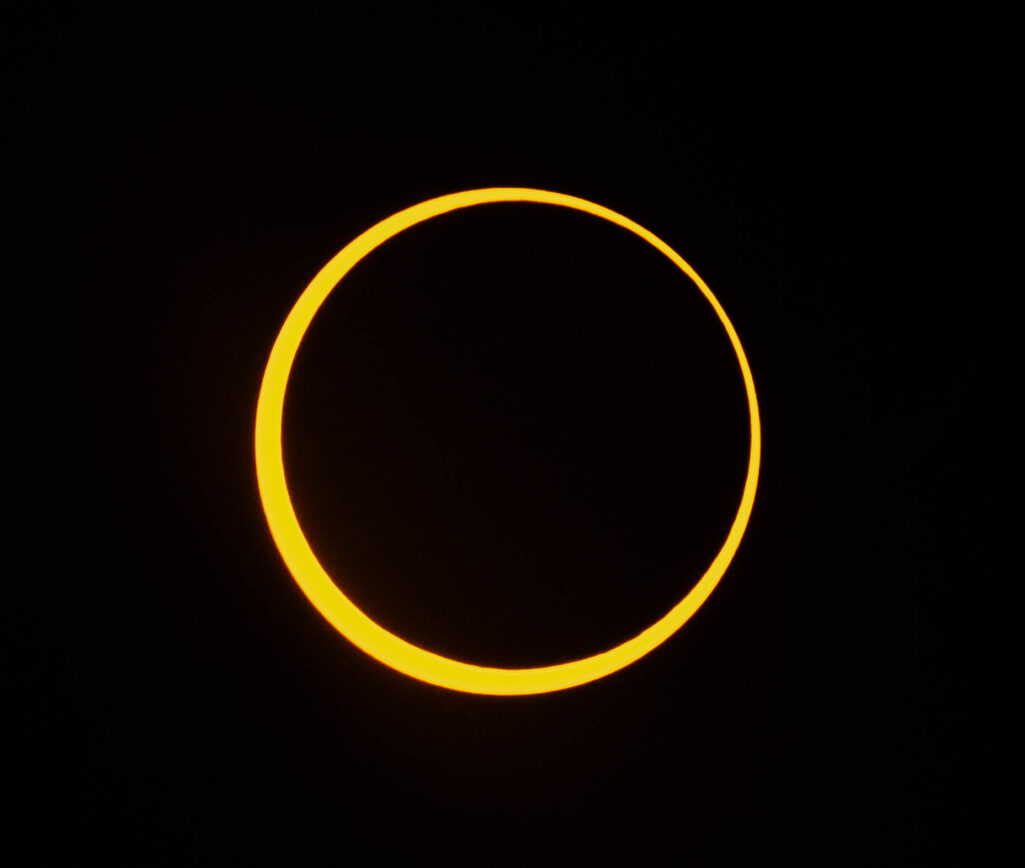
I even managed to get photos of the shadows during totality, a couple of which show the full ring near the center of this tree. Really a very cool phenomenon.
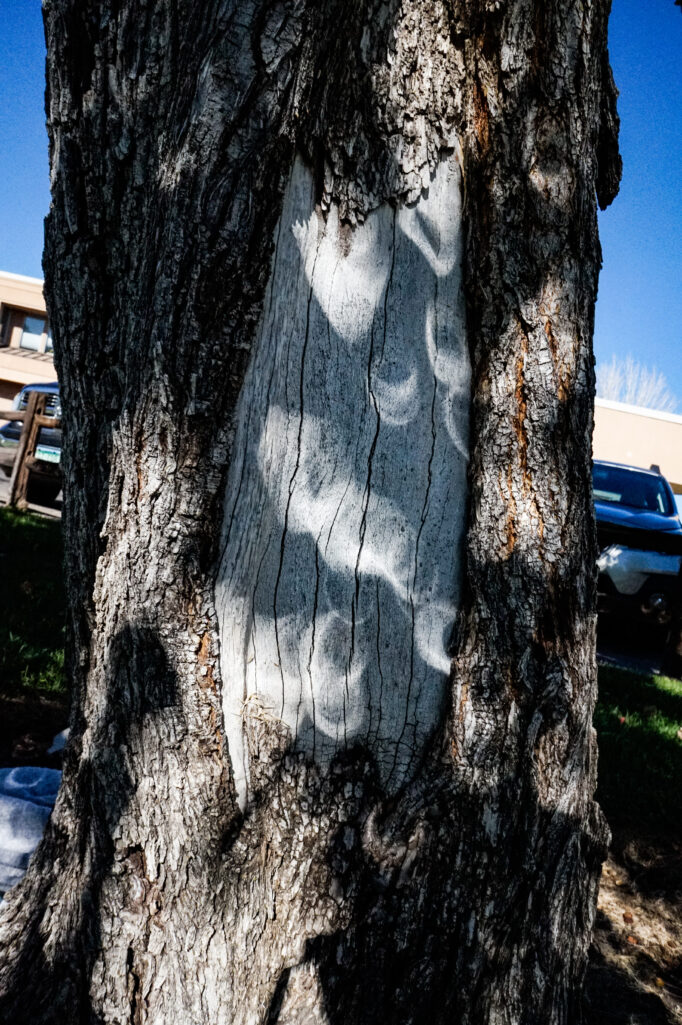
Just before and after the ring of fire is visible, the sun appears to look like a devil’s horn, another neat effect you only get during an annular eclipse. In the image below, you can even see a couple of “Bailey’s beads” along the bottom. These are bits of sunlight shining in between the mountains and hills on the lunar surface. These are visible during total eclipses as well.

For another hour and a half, the moon would slowly reveal the rest of the sun. My final image came around 11:30 a.m. when just the slightest bit of the sun was covered. This moment is known as “last contact” and you can see just barely where the moon left the solar disc on the bottom left.
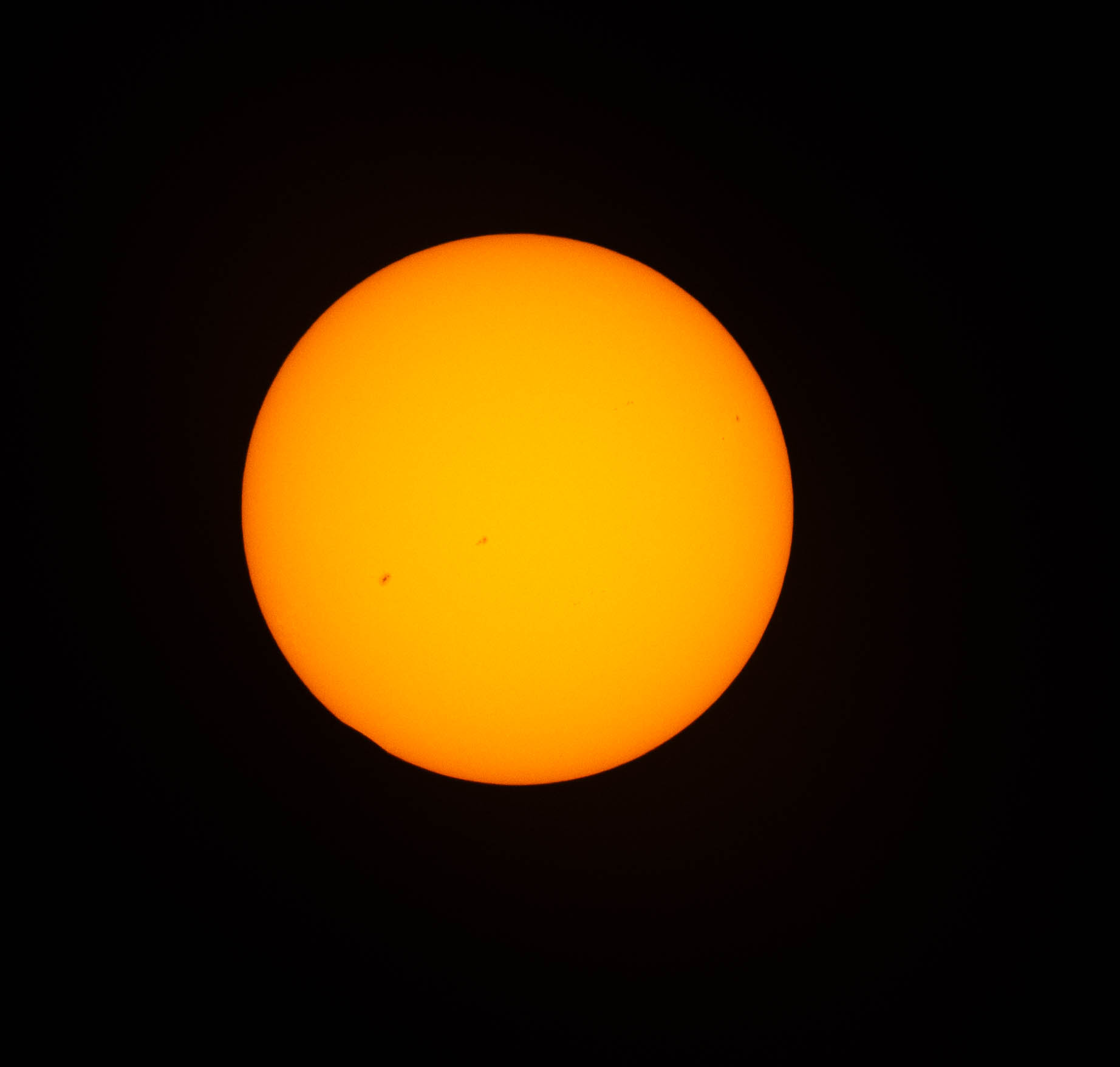
Once in a lifetime
All in all, I took almost 500 photographs of the eclipse. This was far too many but I wasn’t going to miss out on what will likely be a once-in-a-lifetime event for me. I created a composite image of the eclipse using many of those shots.

After packing up, it was time to head to our next stop on our trip, but not before a quick visit to The Chile Pod for some local New Mexican food.
For our next stop we would be traveling back to higher elevations in Colorado…..


